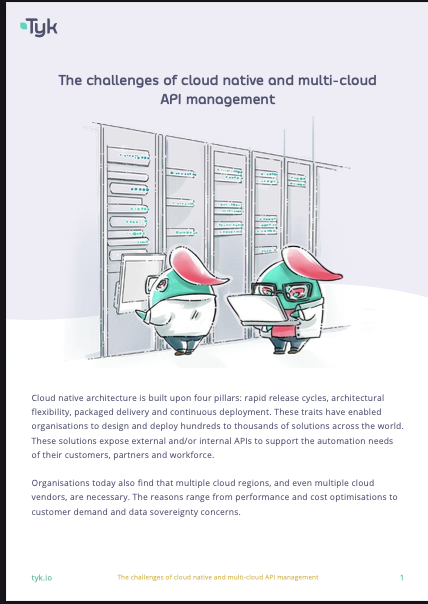The Challenges of Cloud Native and Multi-Cloud API Management

Cloud-native architecture is built upon four pillars:
• rapid release cycles,
• architectural flexibility,
• packaged delivery,
• and continuous deployment.
These traits have enabled organizations to design and deploy hundreds to thousands of solutions across the world with many other companies hungry to hop onto the cloud-native train. These solutions have helped some of the world’s most forward-thinking enterprises expedite what they can accomplish and push the limits of how robust and efficient their technology efforts are.
As we continue to push technology to a global level in ways never done before, organizations today are also finding that multiple cloud regions, and even multiple cloud vendors, are necessary. The reasons range from performance and cost optimizations to customer demand and data sovereignty concerns. The challenges of cloud-native and multi-cloud API management leave adopters with many hurdles to overcome but also a very promising set of possibilities.
API management across multiple regions and cloud providers isn’t easy. While infrastructure solutions such as containerization are making it easier to deploy the same solution across multiple vendors with varying infrastructure resources, there remain several additional concerns.
In this paper, we will examine the following:
- Five challenges of API management in a cloud-native world and ways to address each one.
- The challenges of multi-cloud API management and some approaches that can help ease deploying and managing your API across providers.
By the end of this paper, you should effectively be armed with some new thoughts and techniques for how to push your cloud strategy to new levels. By utilizing the considerations outlined in this paper you should confidently know some new thoughts on cloud-native architectures, including multi-cloud strategies, and how to mitigate some of the common pitfalls and challenges.


